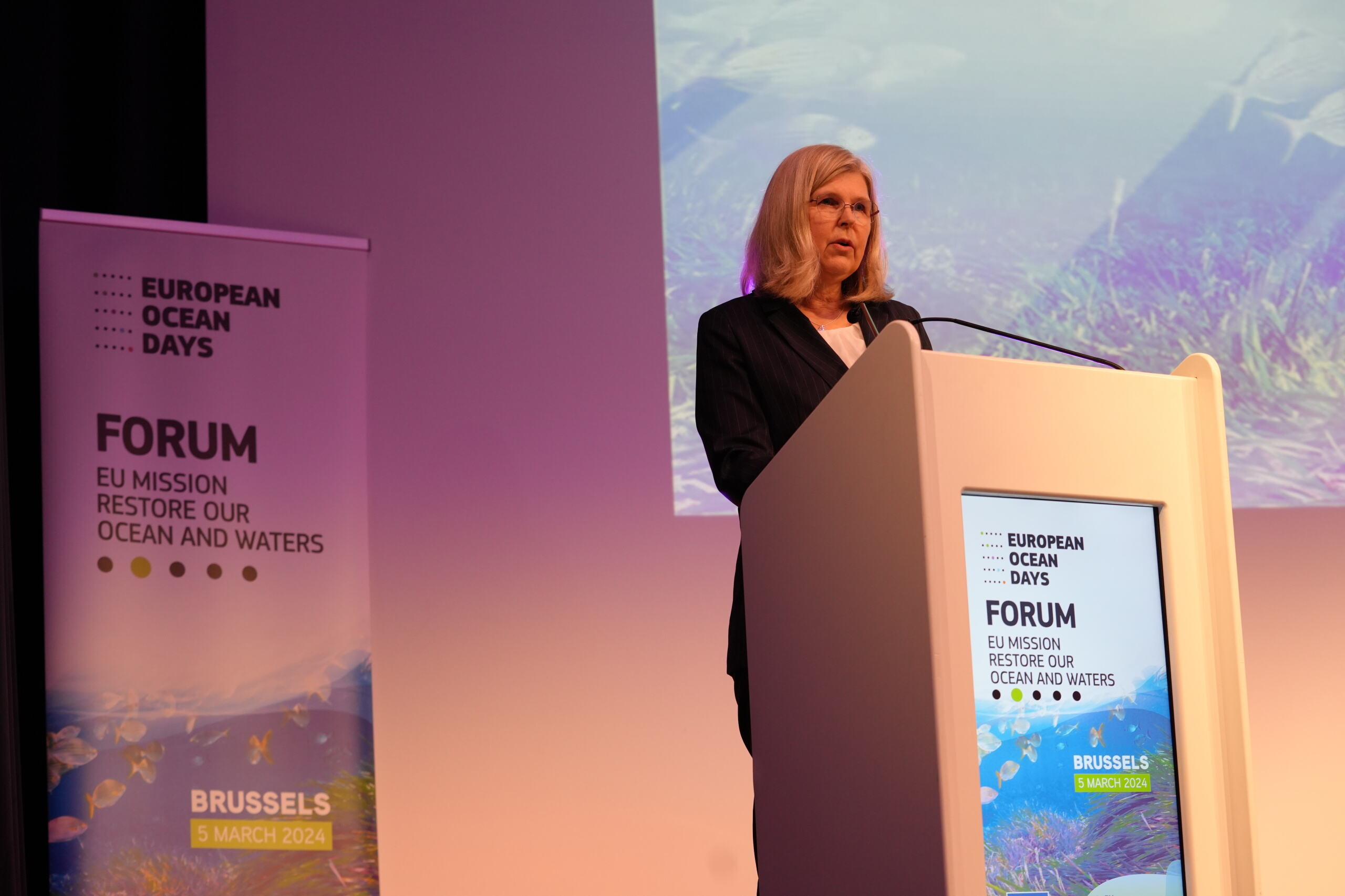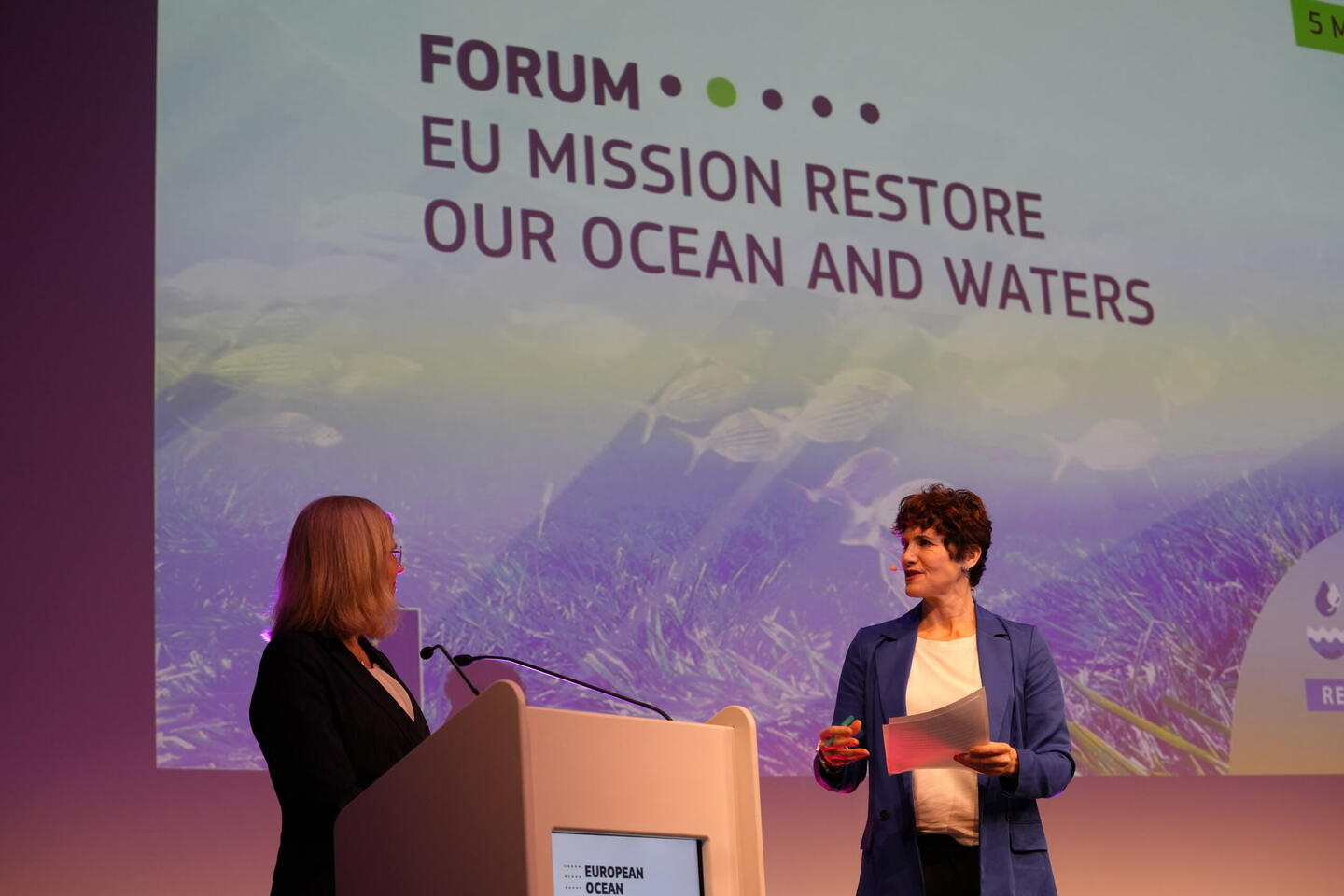Our oceans and waters are the lifeblood of our planet – but they are facing unprecedented threats. The alarming prediction that by 2050, oceans might contain more plastic than fish, paints a grim picture of the environmental crisis at hand. The degradation of marine ecosystems not only threatens our biodiversity, but it also jeopardises human survival, as oceans are vital for producing half of our oxygen.
Addressing this crisis requires concerted action and innovative solutions – a challenge that the EEA and Norway Grants have taken head-on. Through targeted funding and strategic partnerships, Iceland, Liechtenstein and Norway are catalysing essential changes to safeguard our oceans and waters for future generations, drop by drop, project by project.
The EEA and Norway Grants are dedicated to making a difference for a greener Europe, by funding innovative projects that will have a lasting positive impact on our oceans and waters. Ragna Fidjestøl, Managing Director, EEA and Norway Grants

The EEA and Norway Grants’ contribution to the EU Missions
The EU Missions were proposed in 2018 as are a novel approach to tackling some of Europe’s greatest challenges. The five EU Missions are:
- Adaptation to climate change
- Cancer
- Restore our ocean and waters
- Climate-neutral and smart cities
- A soil deal for Europe.
With a 2030 target, the EU Mission ‘Restore our ocean and waters’ (hereinafter Mission Ocean and Waters), aims to protect and restore the health of our ocean and waters, through research and innovation, citizen engagement and blue investments.
This week, Brussels celebrates the European Ocean Days, mobilising relevant actors, such as the EEA and Norway Grants, which are part of the kick-off Mission Ocean and Waters Forum. The forum includes panellists and speakers, such as Virginijus Sinkevičius, the European Commissioner for Environment, Oceans and Fisheriesand, Charlina Vitcheva, Director-General of the DG Maritime Affairs and Fisheries at the European Commission, Joanna Drake, Deputy Director-General of DG Research and Innovation at the European Commission and Ragna Fidjestøl, Managing Director of the EEA and Norway Grants.
“Our commitment through the EEA and Norway Grants aligns seamlessly with the EU Mission 'Restore our Ocean and Waters. By focusing on blue growth and investing in research and innovative maritime solutions, we are actively contributing to the Mission's 2030 target,” says Ragna Fidjestøl, Managing Director, EEA and Norway Grants.
Through the Grants, Iceland, Liechtenstein and Norway provide more than €580 million to support a wide range of projects with the aim to create a more sustainable, cleaner and better future for all. The supported initiatives cover areas that are of long-term importance to the Grants and of particular interest to the European Green Deal. This includes projects in the fields of research, innovation, education, environment and ecosystems, renewable energy, energy efficiency and energy security and climate change mitigation and adaptation.
Partnering up to tackle common challenges
One unique aspect of the EEA and Norway Grants is the bilateral cooperation with entities from Iceland, Liechtenstein and Norway coming together with partners in EU Member States to tackle common challenges. Being leading ocean nations, highly dependent on healthy oceans for their economies, society and environment, the involvement of partners from Iceland and Norway as two of the Donor States brings significant added value, developing joint research and innovations and sharing expertise and knowledge, among others.
In an increasingly interconnected world, understanding the importance of cooperation requires us to look beyond the numbers and delve into the heart of the matter—the stories of ordinary people who have had their lives transformed through partnerships. Eventually, partnerships lead to new solutions and knowledge being developed and applied across Europe. One example is Pharmarine, a project where Norwegian and Polish researchers joined forces to protect the Artic.
“Thanks to the Pharmarine project, teams of Polish and Norwegian scientist had the opportunity to join forces and study risks and transfer of pharmaceutical residues in the Arctic”, says Ewa Wielogórska, Researcher at SINTEF Ocean.
Five projects that make a real difference
Pharmarine is only one of over 6,700 projects in 15 EU Member States that the EEA and Norway Grants currently support. From mapping human pharmaceuticals in the Arctic waters to monitoring and safeguarding the Black Sea, the EEA and Norway Grants are not just funding projects, they are investing in the future of our oceans, waters and rivers, to drive blue innovation, sustainable practices and increased scientific knowledge.
The Mission Ocean and Waters aims to achieve a healthy and pollution free Mediterranean Sea, a carbon-neutral and circular economy in the Baltic and North Sea, a more protected and restored Danube River, as well as restored ecosystems and biodiversity in the Atlantic-Arctic. We showcase five initiatives and collaborations supported by the EEA and Norway Grants that are directly contributing to the Mission Ocean and Watersn tackling Europe’s common challenges and shaping our shared future.

1.Pharmarine: mapping human pharmaceuticals in the Arctic waters
Almost all medication that is ingested ends up in the sewage, and ultimately in our oceans. It can remain there for a long time, either in a diluted form or in living organisms, like phytoplankton and zooplankton. As the use of medication grows throughout Europe, the amount of pharmaceuticals in the environment increases as well.
The extent of pharmaceutical pollution is the subject of the Pharmarine project, which is funded by the Norway Grants. This large-scale comprehensive study unites Polish and Norwegian scientists in a quest to explore how far, and in what quantities, human drugs can be found in oceans – and how they impact life around us.
“We’re not only finding pharmaceuticals in the water. The human drugs can be also expected in zooplankton, which are small animals that live in the water and move with the sea currents. And there are also coastal animals that are presumably exposed to the pharmaceuticals," says Professor Adam Sokołowski, who works at the University of Gdansk

2. Protecting the environment of the Black Sea
The marine environment in Bulgaria, particularly in the Black Sea region, has been under pressure. The EEA and Norway Grants funding is strengthening the monitoring and safeguarding the water quality of the region. EU legislation mandates Bulgaria to maintain a good environmental status of its waters, and the support by the EEA and Norway Grant has enabled the country to enhance its ability to do this in a satisfactory manner. Improving the marine environment of the Black Sea is part of the 13 million euro environment programme in Bulgaria that also funds projects related to climate mitigation, educational initiatives, circular economy and valuation of nature.
“The EEA and Norway Grants play a crucial role in preserving the marine environment of the Black Sea region. The latter does not receive any national or EU-funding. Therefore, the Grants are not only important for Bulgaria but also for other countries in the region," says Sylvia Rangelova, Director of the EU Affairs and International Cooperation Department at the Ministry of Environment and Water in Sofia.

3. Cleaning up the Atlantic with innovative fishing gear and clean-up campaigns
When it comes to our oceans, we've all heard the alarm bells. An increasing amount of plastics ends up in the sea every year, causing an estimated 100,000 marine animals to be strangled, suffocated or otherwise injured. But contrary to popular belief, most of the plastic doesn't come from household products like straws or shopping bags. In fact, according to research, approximately 46% of the Great Pacific Garbage Patch consists of materials relating to the fishing industry. This causes so-called ghost fishing, where abandoned or lost fishing gear 'continues to fish' on its own. It is said that roughly 30% of all fish get entangled in ghost nets, and it can also cause harm to seals, turtles, or even whales.
The E-Redes project has developed an unprecedented pilot study with sustainable fishing materials. In this study, the local fishing community will be provided with biodegradable gillnets and trammel nets, which cannot damage the environment if it’s lost or discarded. In addition, the project involves bimonthly beach clean-ups, where the collected debris is quantified and typified.
“During beach cleanups and diving sessions, we were able to retrieve a significant amount of gear. But we could create awareness, not solve the problem. The amount of lost fishing gear is so huge: if we want to solve it, we have to change the paradigm. So instead of pulling nets out of the ocean, we need to prevent them from getting there in the first place," says Vasco Ferreira is Marine Research Consultant for the Municipality of Esposende.

4. Cleaning up the Karosta Canal in Latvia
The Karosta canal is an artificial canal, constructed at the heart of Latvia at the end of 19th century for the needs of Russian imperial navy fleet. During this period, the canal was exploited without considering the possible negative impact on the surrounding environment. As a result, the toxic pollution that got into the environment, including oil products and heavy metals, has accumulated in sediments of the canal seabed, causing an essential ecological threat to the Baltic Sea environment quality.
A persistent and purposeful environmental rehabilitation project, where research work has been underway since the early 1990s, has been chipping away at the pollution that plagues the Karosta canal. The project is implemented together with the Latvian partner, the association Baltijas Krasti, and the Norwegian partner, the Norwegian Water Research Institute.
“With our expertise and experience from similar work in Norway, we have helped the Latvian authorities on the way to the Karosta Canal achieving a good chemical and ecological condition, so that the canal will eventually meet the water framework directive,” says Senior Research Scientist PhD, Sissel Brit Ranne lev, project manager at the Norwegian Water Research Institute.

5. Raising awareness on the value of water in Greece
From a social science perspective, the water crisis is becoming one of the biggest issues globally. The #WaterMatters campaign is part of an awareness project supported by the EEA Grants water management programme in Greece that aims to increase knowledge on the importance of a good water status in Greek islands. The campaign has reached more than 10,000 people, including students, local communities and visitors on the islands of Santorini, Ios, Leros, Kalymnos, Pserimos and Telendos. Through webinars, educational workshops, social media and other activities, the campaign has raised awareness about the importance of protecting and preserving water resources, encouraging citizens to behave in an environmentally responsible manner. creating citizens with responsible environmental behaviours.
The project is implemented by the Institute of Marine Biological Resources and Inland Waters of the Hellenic Centre for Marine Research, in collaboration with scientists from the Eastern Norway Research Institute at Inland Norway University of Applied sciences.
“There are some Greek islands that lack surface water, so the majority of the water supply to houses comes from desalination plants. In such areas, it's necessary to teach residents about good water practices, starting from a young age. This was one of the primary objectives of the WATER MATTERS awareness campaign," says Mrs Roula Andriopoulou, Biologist at the Institute of Marine Biological Resources and Inland Waters.
